Invisalign Clear Aligners

What Is Invisalign Clear Aligner Therapy?
Invisalign clear aligner therapy is a modern and innovative orthodontic treatment designed to straighten misaligned teeth and create a confident, beautiful smile. Unlike traditional braces, Invisalign utilizes a series of virtually invisible, removable aligners made from a smooth, comfortable, and transparent plastic material.
The treatment process involves the use of advanced 3D computer imaging technology, which enables dental professionals to create a personalized treatment plan for each patient. These digital images assist in designing a series of custom-made aligners that will gradually and gently shift the teeth into their desired positions over time.
Invisalign aligners are unique in their ability to offer an aesthetically pleasing solution for dental correction, allowing individuals to improve their smiles without drawing unnecessary attention to their orthodontic treatment. This characteristic makes Invisalign particularly appealing to those with active lifestyles, professionals, and anyone seeking a discreet way to enhance their dental alignment. Before you deciding on whether Invisalign are right for you, there are some things you should know:
- Who Needs Invisalign?
- What Are The Advantages Of Invisalign?
- What Are The Alternative Treatments If I Do Not Invisalign Treatment?
- How Much Does Invisalign Cost?
- What Are The Steps In The Invisalign Procedure?
- Can I Have Invisalign If I Am Pregnant?
- What Are Common Problems with Invisalign?
If you have any further questions about Invisalign or other dental services offered at Atlas Dental, please contact us.

Free Smile consultation
Have questions about Invisalign treatment? Send us your photos and book a free phone consultation with our Toronto Invisalign provider.

5.0 stars google reviews
Our patients love us! See for yourself why more and more people are choosing Atlas Dental for Invisalign treatment.

Book In-Person Consultation
Want to know whether you are a good candidate for Toronto Invisalign treatment? Book an in-person consultation online ($50 exam fee)
Who Needs Invisalign?
Invisalign clear aligner therapy is a versatile orthodontic treatment suitable for a wide range of dental misalignments and irregularities. If you’re experiencing any of the following dental issues, you may be an excellent candidate for Invisalign:
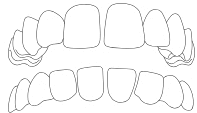
Gapped Teeth
Gaps between teeth can occur with abnormal continued growth of the jawbone. Missing and severely decayed teeth can also cause the surrounding teeth to shift due to the extra space creating gaps in your teeth. Spacing issues and gaps between teeth can lead to gum health problems (due to lack of protection by the teeth), such as periodontal disease.
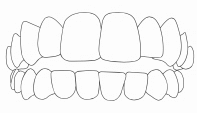
Open Bite
Open bite often occurs when some teeth are unable to make physical contact with the opposing teeth for a proper bite. Most often caused by a genetic abnormal jaw structure or excessive thumb-sucking, an open bite can cause poor or painful chewing, and even speech impairment. It can also lead to greater issues like temporomandibular joint disorder (TMJ).
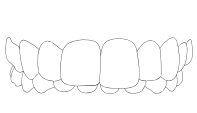
Overbite
Overbite occurs when the upper teeth bite over the lower teeth. It’s typically caused by genetics, bad oral habits, or overdevelopment of the bone that supports the teeth. This can lead to gum problems or irritation, and/or wear on the lower teeth, and can cause painful jaw and joint problems.
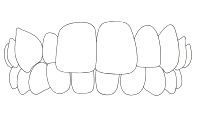
Crossbite
Crossbite can occur when the upper and lower jaws are both misaligned. It causes one or more upper teeth to bite on the inside of the lower teeth, and can happen on both the front and the sides of the mouth. This can cause wear of the teeth, gum disease and bone loss.
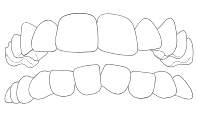
Overly Crowded
Teeth crowding occurs when there is simply a lack of room within your jaw for all of your teeth to fit normally. When left untreated, overly crowded teeth can get worse over time, and result in severely crooked teeth. This crowding can lead to plaque accumulation, tooth cavities and an increased chance of gum disease.
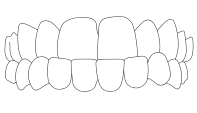
Underbite
Underbite can occur when the lower teeth protrude past the front teeth. It’s usually caused by undergrowth of the upper jaw, overgrowth of the lower jaw, or both. It can also be caused by missing upper teeth. This can prevent the normal function of front teeth or molars, which can lead to tooth wear. It can also cause painful jaw and joint problems.
It’s important to note that the suitability of Invisalign depends on the individual’s specific dental needs and the professional evaluation of a qualified dentist or orthodontist. During the initial consultation, your dental provider will assess your oral health and determine if Invisalign is the right treatment for you. If you have further questions about Invisalign, please contact us.
What Are The Advantages Of Invisalign?
Invisalign clear aligner therapy offers numerous advantages over traditional braces, making it a popular choice for individuals seeking orthodontic treatment. Some of the key advantages of Invisalign include:
- Discreet Appearance: Invisalign aligners are made from transparent plastic, making them virtually invisible when worn. Unlike traditional braces with metal brackets and wires, Invisalign allows you to undergo orthodontic treatment with confidence and without drawing unnecessary attention to your teeth.
- Removable Aligners: Invisalign aligners are removable, which means you can take them out when eating, drinking, or during special occasions. This flexibility allows you to enjoy your favorite foods without restrictions and maintain your regular oral hygiene routine, making it easier to keep your teeth and aligners clean.
- Comfortable Design: Invisalign aligners are custom-made using smooth and comfortable plastic material, minimizing the irritation and discomfort often associated with metal braces. There are no sharp edges or wires that could cause oral sores or discomfort during treatment.
- Improved Oral Hygiene: With Invisalign, maintaining good oral hygiene is more manageable. Since the aligners are removable, you can brush and floss your teeth as usual without navigating around brackets and wires, reducing the risk of plaque buildup and potential gum issues.
- Predictable Results: Invisalign treatment involves advanced 3D computer imaging technology that allows you to see a virtual representation of the expected progress and final outcome before treatment begins. This predictability provides patients with a clear vision of the end result.
- Time-Efficient Treatment: Invisalign treatment time varies based on individual cases, but in many instances, it can be faster than traditional braces. Some individuals may achieve their desired results in as little as 6 to 18 months, depending on the complexity of their dental misalignments.
- Less Frequent Dental Visits: Unlike traditional braces that often require frequent adjustments and tightening, Invisalign typically requires fewer in-person visits to the dental office. You may receive several sets of aligners at once, and follow-up appointments are usually scheduled every 4 to 6 weeks.
- No Food Restrictions: Traditional braces come with certain food restrictions to prevent damage to the brackets and wires. With Invisalign, you can enjoy all your favorite foods since you remove the aligners before eating.
- Athletic-Friendly: For individuals who participate in sports or other physical activities, Invisalign offers a safer and more comfortable option compared to traditional braces, as there is no risk of oral injuries caused by metal components.
Invisalign clear aligners have revolutionized orthodontic treatment, offering a convenient, comfortable, and aesthetically pleasing solution for people of all ages seeking to achieve a straighter and healthier smile. However, it’s essential to remember that the success of Invisalign treatment depends on wearing the aligners as directed by your dentist or orthodontist and maintaining proper oral care throughout the treatment process. To learn more about the advantages of Invisalign clear aligners, please contact us.
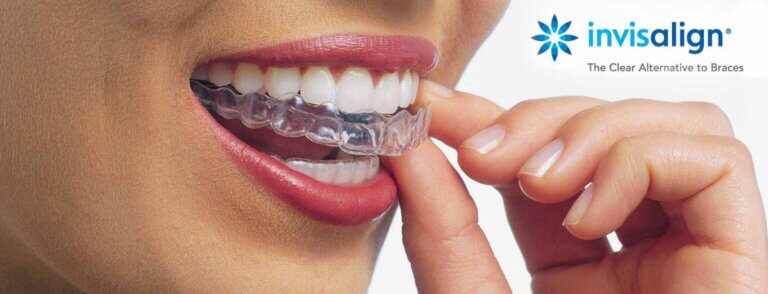
What Are The Alternative Treatments If I Do Not Choose Invisalign?
If you decide not to choose Invisalign as your orthodontic treatment option, there are several alternative treatments available to help straighten your teeth and improve your smile. The most suitable alternative will depend on your specific dental needs and the recommendation of your dentist or orthodontist. Here are some common alternative treatments to consider:
- Traditional Braces: Traditional braces are the most well-known and time-tested orthodontic treatment. They consist of metal brackets bonded to the teeth, connected by archwires that apply pressure to gradually move the teeth into their desired positions. Traditional braces are effective for correcting a wide range of dental misalignments.
- Clear Aligners (Other Brands): In addition to Invisalign, there are other clear aligner systems available, such as ClearCorrect and SmileDirectClub. These systems work similarly to Invisalign, providing a series of clear, removable aligners to straighten teeth.
- Porcelain Veneers: Porcelain veneers are a cosmetic dentistry option that can improve the appearance of teeth by placing thin shells of porcelain over the front surfaces. While they don’t actually straighten teeth like orthodontic treatments, they can be an alternative for individuals with mild alignment issues seeking primarily cosmetic improvement.
It’s crucial to discuss your goals, preferences, and any concerns with your dentist or orthodontist to determine the most appropriate treatment for your specific situation. Each alternative treatment has its advantages and limitations, and a thorough evaluation by a dental professional will help you make an informed decision about the best course of action to achieve a healthy, beautiful smile. If you have further questions about Invisalign treatment options, please contact us.
Cost Of Invisalign Clear Aligner Orthodontic Treatment
The cost of Invisalign clear aligner therapy will depend on the difficulty of your case, the brand of clear aligner, and whether you have a general dentist or orthodontist specialist treating you. At Atlas Dental, treatment costs as low as $4000 and could go as high as $10,000. Speak to your general dentist to see if clear aligner therapy is right for you, the aligner brands available, expected costs, and if a referral to an orthodontist specialist is required for tougher cases. The codes relevant to Invisalign clear aligners in the Ontario Dental Association’s Suggested Fee Guide appear as follows:
Payment for Orthodontic Treatment in Progress
- 93331 – Payment/Installment for treatment in progress: Independent Consideration
Predetermination of Available Benefit
- 93341 – Orthodontic treatment (fee entered is the value of the treatment plan being predetermined): Independent Consideration.
The Ontario Dental Association’s Suggested Fee Guide is a proposed fee structure that dentists in Ontario may or may not follow. Please consult with your dentist about fees before going ahead with treatment.
Payments can be made in installments during the course of clear aligner treatment, which usually ranges from 3 to 12 months depending on the difficulty of your case.
Invisalign clear aligner orthodontic treatment is sometimes covered through enhanced dental insurance plans. Be sure to find out from your dental insurance plan provider how much you are eligible for before going ahead with dental treatment. Your dentist can help you submit a predetermination to your dental insurance.
For patients without dental insurance, Atlas Dental is pleased to offer dental financing through Dentalcard. Affordable payment plans start at 7.95% for terms of 6 months to 6 years. To learn more about Dentalcard dental treatment financing, follow this link.
What Are The Steps In The Invisalign Procedure?
The Invisalign procedure typically involves several key steps to ensure a successful and effective treatment. Here’s an overview of the process:
- Initial Consultation: The first step is to schedule an initial consultation with a qualified Invisalign provider, which may be a dentist or an orthodontist. During this appointment, you’ll discuss your dental concerns, treatment goals, and whether Invisalign is a suitable option for you. Please review these pre-operative instructions before your visit.
- Dental Examination and Imaging: Your dentist or orthodontist will conduct a thorough dental examination, which may include X-rays, photographs, and impressions of your teeth. These images will help create a 3D digital model of your teeth, enabling your dental provider to plan your Invisalign treatment accurately.
- Custom Treatment Plan: Using the digital model of your teeth, your dental provider will map out a personalized treatment plan. This plan outlines the specific movements of your teeth at each stage of the treatment and estimates the duration of the entire process.
- Preview of Treatment Outcome: With Invisalign’s advanced software, you’ll have the opportunity to view a virtual representation of how your teeth will move during each stage of the treatment. This preview allows you to see the expected outcome of your Invisalign treatment before it even begins.
- Custom Aligners: Based on your treatment plan, a series of custom-made Invisalign aligners will be created specifically for your teeth. Each aligner is slightly different from the previous one, designed to apply gentle pressure and gradually move your teeth into their desired positions.
- Aligner Fitting: Once your custom aligners are ready, you’ll visit your dental provider to receive them. Your dentist or orthodontist will ensure the aligners fit comfortably and provide you with post-insertion instructions on how to wear and care for them properly.
- Wearing the Aligners: You’ll wear each set of aligners for about 1 to 2 weeks, depending on your treatment plan. It’s essential to wear the aligners for at least 20-22 hours a day, removing them only when eating, drinking (unless water), brushing, and flossing.
- Progress Checkups: Periodically, you’ll have checkup appointments with your dental provider to monitor your progress and receive new sets of aligners. These appointments are essential to ensure your treatment is on track and make any necessary adjustments.
- Completing the Treatment: Once you’ve gone through all the sets of aligners and your teeth have reached their desired positions, your Invisalign treatment is complete. However, the process isn’t entirely finished yet.
- Retention Phase: After completing your Invisalign treatment, your dental provider may recommend a retention phase. During this phase, you’ll be provided with removable retainers or fixed retainers to help maintain your newly achieved smile and prevent teeth from shifting back to their original positions.
- Follow-Up Care: Regular follow-up visits with your dentist or orthodontist are crucial to ensure the long-term success of your Invisalign treatment and to address any concerns that may arise during retention.
Remember that each individual’s treatment plan and progress may differ, so it’s essential to follow your dentist or orthodontist’s guidance throughout the entire Invisalign procedure to achieve the best possible results for your unique dental needs. If you have further questions about the Invisalign procedure, please contact us.
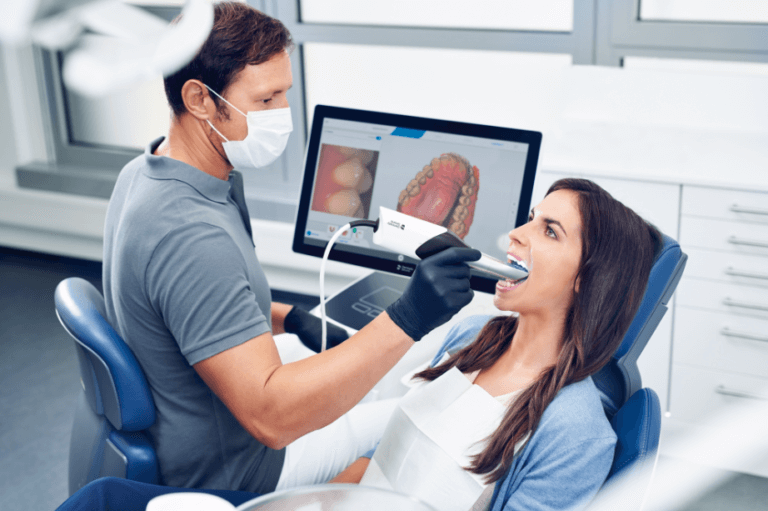
Can I Have Invisalign If I Am Pregnant?
While Invisalign is generally considered safe and effective for most individuals, it is not recommended to start Invisalign treatment if you are pregnant. During pregnancy, hormonal changes can affect various aspects of your body, including your oral health. Additionally, certain dental procedures, including orthodontic treatments like Invisalign, are usually postponed until after pregnancy as a precautionary measure. Here’s why:
- Hormonal Changes: Pregnancy hormones, particularly elevated levels of estrogen and progesterone, can lead to increased gum sensitivity and inflammation. This condition, known as pregnancy gingivitis, can make wearing aligners uncomfortable and may affect the treatment process.
- Oral Health Concerns: Pregnancy gingivitis can also increase the risk of gum disease and other oral health issues. It is essential to focus on maintaining excellent oral hygiene during pregnancy, but starting orthodontic treatment like Invisalign at this time might not be ideal.
- Nausea and Vomiting: Many pregnant women experience morning sickness and nausea during the first trimester. Frequent vomiting can affect the fit and effectiveness of the aligners and may lead to unnecessary adjustments.
- Limited Radiographs: X-rays and dental imaging are typically avoided during pregnancy unless absolutely necessary for emergency situations. Orthodontic treatments often involve X-rays, and it is best to avoid unnecessary radiation exposure during pregnancy.
- Dental Priorities: During pregnancy, the focus is on maintaining good overall health for both the mother and the baby. Elective dental procedures, including orthodontic treatments, are usually deferred until after the pregnancy is over.
If you are considering Invisalign or any other dental treatment and are pregnant or planning to become pregnant, it’s crucial to inform your dentist or orthodontist about your pregnancy status. Your dental provider can provide appropriate guidance and ensure that your oral health needs are met while prioritizing the safety and well-being of both you and your baby. If you have further questions about Invisalign during pregnancy, please contact us.
What Are Common Problems with Invisalign?
While Invisalign clear aligners are an effective and popular orthodontic treatment, like any dental procedure, there are some common problems that patients may encounter during their treatment. It’s essential to be aware of these issues and work closely with your dentist or orthodontist to address them promptly. Some common problems with Invisalign include:
- Discomfort or Soreness: When you start wearing a new set of aligners, you may experience some discomfort or soreness as your teeth adjust to the pressure. This is normal and usually subsides after a few days. Over-the-counter pain relievers and orthodontic wax can help alleviate discomfort.
- Speech Difficulties: Some patients may experience minor speech difficulties, such as a slight lisp, when first wearing Invisalign aligners. This is temporary and tends to improve as you get used to speaking with the aligners in place.
- Aligner Fit Issues: Occasionally, an aligner may not fit properly, causing discomfort or not providing the expected tooth movement. If you encounter this problem, contact your dental provider immediately for adjustments or replacements.
- Tracking Issues: If aligners are not worn as prescribed, or if there are issues with their fit, the desired tooth movement may not occur as planned. Consistent wear and following the treatment plan are crucial for successful results.
- Loss or Damage: Since Invisalign aligners are removable, there is a risk of misplacing or accidentally damaging them. Always store your aligners in their case when not in use, and avoid exposing them to extreme heat or leaving them where they may be easily lost or thrown away.
- Eating or Drinking with Aligners: It’s essential to remove Invisalign aligners before eating or drinking anything other than water. Consuming food or beverages with aligners in place can stain or damage them and may also lead to oral hygiene issues.
- Inconsistent Wear: For Invisalign treatment to be successful, it’s crucial to wear the aligners for the recommended 20-22 hours per day. Inconsistent wear can prolong treatment time or compromise the desired results.
- Attachment Issues: In some cases, tooth-colored attachments may be bonded to certain teeth to help facilitate specific movements. These attachments may occasionally come loose or be accidentally dislodged.
- Gum Irritation: Some patients may experience mild gum irritation or sore spots due to the edges of the aligners. Your dental provider can provide guidance on how to address this issue.
It’s important to communicate openly with your dental provider if you experience any problems or have concerns during your Invisalign treatment. Regular checkups and follow-up appointments will allow your dentist or orthodontist to monitor your progress, make any necessary adjustments, and ensure that your treatment stays on track to achieve the best possible results. If you have further questions about Invisalign, please contact us.
We also think you’ll like…
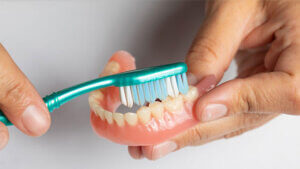
How to Keep Removable Oral Appliances Clean
How to Keep Removable Oral Appliances Clean Removable oral appliances like dentures, retainers, or nightguards play a crucial role in our oral health, whether they’re
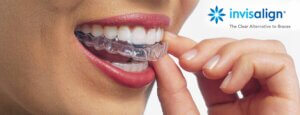
Invisalign Pre-Visit Instructions
Invisalign Pre-Visit Instructions What You Should Do Before Your First Invisalign Clear Aligner Scan Appointment Invisalign is a tooth movement appliance that uses a series
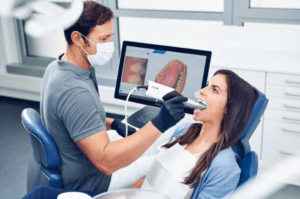
Intraoral 3D Scanner
Intraoral 3D Scanner What Is an Intraoral 3D Scanner? In the rapidly evolving landscape of modern dentistry, technological advancements continue to reshape the way oral

Invisalign Post-Insertion Instructions
Invisalign Post-Insertion Instructions What You Should Do After Receiving Your Invisalign Trays Invisalign is a tooth movement appliance that uses a series of nearly invisible,
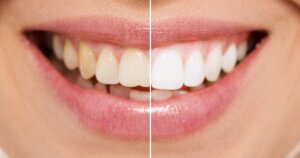
Smile Makeover
Smile Makeover What Is a Smile Makeover? A confident smile can brighten up a room and leave a lasting impression. It is a reflection of

